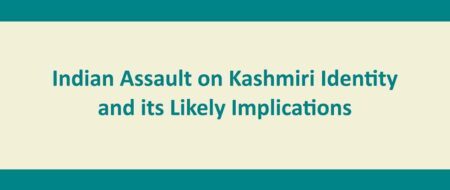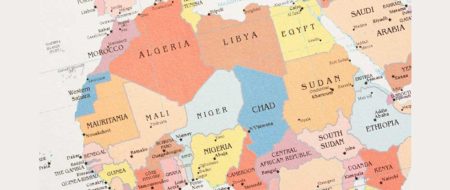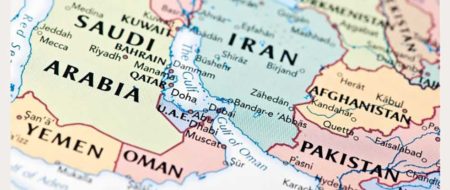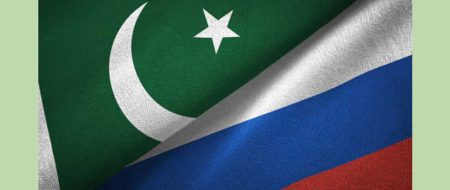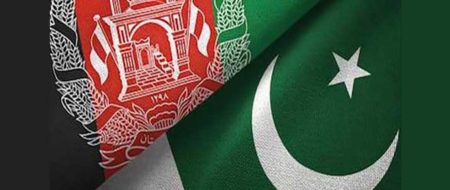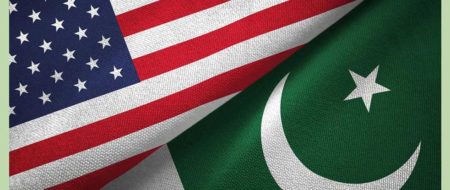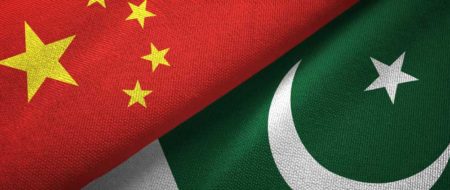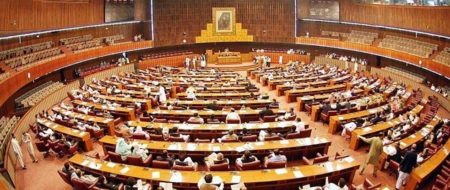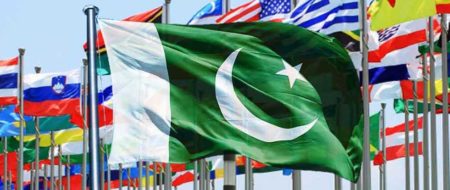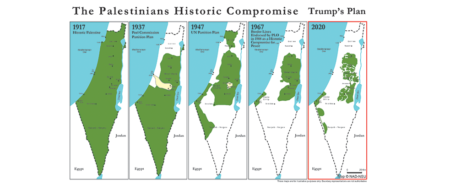US Aid to Pakistan and Democracy
The pattern of US aid flows to Pakistan shows that it has not been used to promote democracy in Pakistan; in fact, it has undermined it.
Policy Perspectives , Volume6 , Number2, July – December 2009
Abstract
[This paper examines US bilateral aid flows to Pakistan from 1947 to 2006 to determine the extent to which the assistance has been linked with the strengthening of democracy in Pakistan. Comparing the allocation of American foreign aid (total, economic and military) provided to democratic and dictatorial regimes in Pakistan (in terms of total, average annual, and per capita per year), the paper finds that US aid shows a consistent pattern of high flows for military dictatorships and low or negligible flows for democratic governments, indicating that US aid has not been used to promote democracy in Pakistan; in fact, it has undermined it. The national and regional events responsible for the ebb and flow of US aid are discussed, showing that the US has maintained warm cooperative relationships with military dictators to use Pakistan to pursue its own political, security and geo-strategic goals. Editors]
Introduction
On June 16, 2009, the US Senate’s Foreign Relations Committee passed the Enhanced Partnership with Pakistan Act, known as the Kerry-Lugar Bill. The bipartisan act authorizes the provision to Pakistan of $1.5 billion annually in US aid. The bill, which awaits approval of the full chamber, has come under intense debate with regard to the conditions and benchmarks to be attached with any further aid for Pakistan.
In recent years, the country has been receiving some aid from the United States as its ally in the so-called “War on Terror.” However, it has been a difficult relationship: on the one hand, the aid has been considerably short of the cost Pakistan has been incurring in the war; on the other, the US has been exerting excessive pressure, continuously demanding that the regime of General Pervez Musharraf “do more.” Despite the huge losses that Pakistan has suffered in the war, and though it recognizes the need to provide aid to its South Asian ally, the US administration has tended to give the impression that Pakistan has not delivered a ‘performance’ commensurate with the funds given to it; to qualify for continuity of aid, it will have to do even more.
While Pakistan has been a recipient of US aid since the early years of its independence, the dabate has once again brought into focus the question that to what extent the US aid has been of any assistance in developing the political institutions in Pakistan. Keeping in view the current US aid dealings with Pakistan, it is helpful to view this situation in the historical context of the goals of US aid and the specific purposes underlying its provision to Pakistan.
The concept and form of US international aid have evolved a great deal since its initiation and institutionalization in the post-World War II landscape in the light of President Truman’s “Point Four” program. During his historic inaugural address on January 20, 1949, the President mentioned democracy several times and enumerated its advantages over communism. The President asserted that a just, fair and peaceful world is possible through democracy where “free nations can settle differences justly and maintain lasting peace.”
Referring to the Marshal Plan for the reconstruction of war-ravaged Europe, President Truman stated that the “purpose of that unprecedented effort is to invigorate and strengthen democracy in Europe, so that the free people of that continent can resume their rightful place in the forefront of civilization and can contribute once more to the security and welfare of the world.” In short, economic development and promotion of democracy in the underdeveloped countries were major themes highlighted by the President during his epoch-making address. (Truman’s speech was the most important in this regard, it was this historic address that gave birth to the whole Point Four program for underdeveloped world and also Marshal Plan for the reconstruction of war-ravaged Europe. Foreign aid actually started after this, that’s why Truman’s ideas are elaborated here as it became the US official policy to give aid to underdeveloped countries and also to use aid as a foreign policy tool in the form of ‘carrot and stick’).
To what extent has the US pursued the cause of democracy and liberty in letter and spirit, and how much has this concept been intertwined in US bilateral aid policies over time? Based on an analysis of data for almost six decades, this paper appraises the allocation of US bilateral aid to Pakistan and its linkages with democratic and dictatorial regimes in the country.
When allocating assistance to recipient countries, all donors, both bilateral and multilateral, attach some conditionalities, sometimes referred to as “benchmarks,” with their official aid pledges. These foreign aid policies reflect the interests of the donors and are subject to change in response to national and international events concerning the donor country. Over time, various bilateral donors, including the US, have reassessed and readjusted their foreign aid policies in the wake of new challenges and needs by incorporating economic and political conditionalities. During most of the cold war period, democracy promotion was overshadowed by foreign policy goals and the containment of communism, especially in geo-strategically important countries like Pakistan. Most donors prioritized their own foreign policy considerations, such as political, security and geo-strategic orientations, during these years; a few have continued to do so even up until this day.
However, some multilateral organizations and bilateral donors continued advocating the cause of democracy even during the cold war era. Organizations such as The Asia Foundation and National Endowment for Democracy have been active in democracy promotion since 1956 and 1984, respectively. Among donors, Germany was the first to prioritize democracy and provided generous funds for its promotion in the 1980s. Later, most other bilateral donors, including the US, also started democracy promotion assistance. After the end of the cold war, democracy began to attract more and more attention, both in terms of amounts of aid as well as new types of interventions hitherto alien to democracy.
The end of the communist threat diminished the geo-political and security motives of major donors and renewed focus on issues such as democratization, human rights, good governance and poverty reduction. In the 1990s, US foreign policy also incorporated a democracy promotion agenda that was free of the geo-strategic compulsions of the cold war interlude.
An Overview of US Aid to Pakistan
Pakistan is located at the northwestern part of the Indian subcontinent. It lies at the meeting point of three important regions, South Asia, Central Asia and the Middle East, and this is why it had immense international strategic significance during the cold war and is currently a “frontline state” in the US-led “War on Terror.”
This section presents an outline of the provision of US aid to Pakistan since the beginning of bilateral relations between the two countries, focusing in particular on the type of ruling regime in Pakistan (democratically elected civilian government or military dictatorship) and the level of economic and military aid provided. A detailed analysis of all of the regimes is beyond the scope of this paper, and, indeed, unnecessary for determining the basic relationship of US aid with democracy in Pakistan. However, Table 1 provides a synopsis of the different regimes that ruled Pakistan until 2006, significant regional and international events, and US aid policies for Pakistan. Table 2 shows the economic, military and per capita aid provided by the US to Pakistan every year from 1947 to 2006 (in constant 2006 US$ value).
Table 1: Summary of US Aid Policies towards
Democratic Regimes and Dictatorships in Pakistan
| Ruling Regime |
Overall US Aid Flow |
Significant Events |
US Aid Details |
|
Civilian regimes, |
Modest economic aid; little military assistance |
|
Pakistan becomes member of South East Asian Treaty Organization (SEATO) and Central Treaty Organisation (CENTO); therefore, ample US aid, both economic and military |
|
1st military coup, 1958. General Ayub becomes Chief Marshal Law Administrator (CMLA)/President till 1969 |
Ample economic and military aid during most of Ayub’s tenure |
Good bilateral relations despite military rule |
No/little military assistance despite SEATO/CENTO membership |
|
General Yahya replaces Ayub as a CMLA/President, 1969 |
Sufficient economic aid; negligible military aid |
Pakistan-India war, 1971 East Pakistan breaks away to become independent Bangladesh, 1971 |
Low US aid |
|
Civilian rule, 1971-1977 |
Modest economic aid; no military aid |
Pakistan’s constitution takes final shape, laying foundation of parliamentary democracy in country |
Low US aid |
|
2nd military coup: General Zia leads country as CMLA/President, 1977-1988 |
Little economic/ military assistance till 1982; substantial aid thereafter |
Fall of Shah of Iran, 1979 |
US imposes sanctions in April 1979 due to Pakistan’s secret nuclear program |
|
Civilian/democratic regimes, 1988-99 |
Low economic/military aid |
Soviet withdrawal from Afghanistan in 1989 |
US imposition of sanctions against Pakistan for its nuclear programme; little or no aid |
|
|
|
Pakistan conducts nuclear tests to counterbalance India’s tests, May 1998 |
US imposes severe sanctions; little or no aid |
|
Military rule under General Musharraf, 1999-2008 |
Little economic/ |
9/11 |
All US sanctions lifted; increased US aid, both economic and military |
Table 2: Annual US Aid to Pakistan, 1947–2006
The discussion is further illustrated by Figure 1, a graphical comparison of US economic and military aid to Pakistan under democratic and non-democratic regimes, and Figure 2 (both figures given in the following pages), which presents a graphical view of military, economic and per capita aid to Pakistan from 1947 to 2006 also exhibiting rise and fall in US aid over time.
Following brief discussion about the context of Pak-US relations and US priorities in the region during different periods will help understand the significance of the data presented above.
1950s: Pakistan Aligned with the US
It was Pakistan’s geo-strategic significance that attracted American policymakers’ attention to Pakistan during the cold war; they recognized that the country could play an important role in the containment of communism. During these years, Pakistan signed various pacts and treaties either involving the United States or carved under US patronage. Thus, the Mutual Defence Assistance Agreement was signed between the US and Pakistan in May 1954. Pakistan was also among several regional countries comprising the Southeast Asia Treaty Organization (SEATO), which was established by the US to block the spread of communism. In 1955, the US-sponsored Baghdad Pact was signed between Iran, Iraq, Turkey, Pakistan and Britain to contain Soviet influence (in 1958, its name was changed to CENTO—Central Treaty Organisation). As Pakistan emerged as an important actor in the region to safeguard the interests of the Western powers, the US began to provide generous aid to it in the mid-1950s.
There was civilian rule in Pakistan during 1947-58 but the situation was far from stable. After the death of its founder, Quaid-e-Azam Mohammed Ali Jinnah, in 1948, and the assassination of Prime Minister Liaqat Ali Khan in 1951, the country saw seven prime ministers in the brief span of 10 years. With the stated objectives of bringing stability and ridding the country of corrupt and inefficient politicians, Pakistan’s military leaders overthrew the civilian leadership in 1958; the military was to dominate the political theatre for more than a decade.
1960s: An Opportune Coup and More Aid
The first military coup in Pakistan had taken place under the command of General Ayub Khan (1958-69). Though illegitimate, “the coup had gone through entirely without bloodshed or disorder, and was obviously welcomed with heartfelt relief by the great mass of the people.” Sensing the support of the West, the military ruler took some measures that indicated his interest in staying in power for some time. One such step was the promulgation of the Elective Bodies’ Disqualification Order (EBDO), which disqualified most of the opposition politicians. Martial Law was lifted in 1962 as President General Ayub Khan introduced a new “basic democracy” system based on indirect election that was quite removed from the model of real democracy.
It was widely thought that the coup was endorsed by the US to win the support of the pro-West military in the cold war. General elections were a few months away and it was perceived that the new elected government would alter its policy of cold war involvement. US support for the military ruler not only prolonged his illegitimate regime but also played a vital role in further strengthening his grip on power. It is evident from Table 2 that Pakistan was receiving huge amounts of economic aid from the United States besides sufficient military assistance during most of this period. Not only did the US provide ample aid to Pakistan during Ayub Khan’s era but there were also about 8,000 American experts working in different fields in the country. However, US military assistance declined sharply after the India-Pakistan war of 1965 and remained negligible thereafter for more than a decade and a half.
The pattern of US aid remained the same during the short tenure of General Yahya Khan (1969-71) to whom Ayub Khan had handed over power after Zulfiqar Ali Butto-led country-wide demonstrations forced him to resign. During the civilian rule that followed (1971-77), economic aid from the US declined and military assistance remained almost negligible.
1970s: Democracy, Pakistan’s Nuclear Ambitions and Sanctions
Pakistan had undergone unprecedented turmoil and chaos in 1971. It had fought another war with India and lost its East Wing, which became independent Bangladesh. These events left the country’s military establishment in utter disgrace and it had to, unwillingly, return power to a civilian leadership. Prime Minister Zulfiqar Ali Bhutto’s Pakistan People’s Party (PPP) remained in power from 1971 to 1977. After the 1977 general elections in the country, however, there were countrywide protests against Bhutto’s alleged rigging of the poll. The situation culminated in a military coup, led by General Zia ul Haq, in July 1977.
American aid to Pakistan had already started declining due to Bhutto’s secret pursuit of nuclear technology during the concluding year of his regime. General Zia ul Haq not only continued the pursuit of nuclear arms, he also trampled over democracy and conducted human rights abuses; Pakistan became a pariah state during the early years of his regime.
US Secretary of State Henry Kissinger first visited Pakistan to persuade Islamabad to cancel its nuclear technology program and then Paris to stop it from supplying the material it had agreed to provide for the program to Pakistan. Under US influence, France cancelled the agreement in 1978, dealing a severe blow to Pakistan and its incipient nuclear defense program. Not satisfied with this, and to teach Pakistan a lesson and punish it further for its covert nuclear activities, the Carter administration imposed the Symington Amendment on Pakistan in April 1979, thereby cutting off most economic and military aid.
1980s: Military Dictatorship and Record Aid
However, the geo-political landscape was to transform later that year, leading to dramatic changes in US foreign aid policies. The Islamic revolution in Iran deprived America of one of its trusted allies in the region—the Shah of Iran. Then, the Soviets invaded Afghanistan. The strategic significance of Pakistan changed overnight: the US needed Pakistan’s support to stop the Soviet forces within Afghanistan; suddenly, Pakistan was viewed as a frontline ally against communism.
In December 1979, only a few months after their imposition, all sanctions against Pakistan were lifted by Washington and replaced with generous aid. By 1981, the US and Pakistan were discussing a $3.2-billion aid package. By 1985, Pakistan was the fourth largest recipient of US bilateral military assistance, after Israel, Egypt and Turkey. With the approval of a $4.02-billion military and economic aid package in 1987, Pakistan became the second largest recipient of American aid, after Israel. Focusing on its enhanced geo-strategic importance in the cold war, the US no longer seemed concerned about Pakistan’s nuclear program or lack of democracy, or the human rights violations of its military regime.
1990s: Democracy and Post-Cold War Coldness
On August 17, 1988, President Zia ul Haq was killed in a mysterious plane crash, along with all other passengers aboard, including top military officials and the US Ambassador, Arnold L. Raphael. General elections were announced the same year and democratic government was restored in Pakistan after eleven years of military rule.
Soviet forces withdrew from Afghanistan in 1989. With the collapse of the Union of Soviet Socialist Republics (USSR), the cold war was over and Pakistan’s assistance was no longer needed. Although there was now a civilian regime in Pakistan and a ripe opportunity for strengthening democratic institutions, it was once again Pakistan’s nuclear program that the US focused on. Relations between the two countries soured as the US changed its bilateral aid policy towards its former close ally. Washington slapped the discriminatory and country-specific Pressler Amendment on Pakistan, along with severe sanctions, presenting the nascent civilian regime with a serious economic crisis. Within a brief period, all channels of bilateral aid to Pakistan were shut down. “What had once been one of the largest US Agency for International Development (USAID) offices in the world, employing more than 1,000 staff around the country, shrank to almost nothing virtually overnight.” Indeed, US-Pakistan bilateral relations went to the level of indifference and covert hostility in the post-cold war period. As is evident from Table 2, after the end of the cold war, during democratic regimes in Pakistan between 1988 and 1999, the US provided negligible economic aid to Pakistan and almost no military assistance. US economic aid fell from well above $500 million a year to less than $100 million a year.
In May 1998, Pakistan carried out nuclear tests in response to India’s testing of nuclear devices earlier the same month. The following year, a military coup was executed by General Musharraf. The international community, including the US, deplored these steps; bilateral relations between Pakistan and the US deteriorated further, American aid ebbed to its lowest level, and severe sanctions were imposed on Pakistan to restore democracy. (Pakistan was under two layers of US sanctions- nuclear and democracy related).
9/11: Military-led Pakistan at America’s Frontline Again
However, September 11, 2001 once again changed the geo-strategic landscape in favor of Pakistan. The US needed the support of Pakistan to invade Afghanistan and dismantle the Taliban regime, which was changed of hosting al Qaeda, leadership the alleged perpetrator of the 9/11 attacks. The Chief of Army Staff and President of Pakistan Gen. Musharraf assured America of full support of the Pakistani government and army, and thus Pakistan joined the US War on Terror. Once again, the US ignored the lack of democracy and human rights issues in Pakistan: all sanctions were lifted and enhanced official aid resumed, as shown in Table 2.
Comparison of US Aid to Democratic and non-Democratic Regimes
- The above narration indicates that military dictatorships have received far more aid from the United States than democratic governments in Pakistan. US aid to Pakistan amounted to $382.9 million for each year of military-rule in comparison to only $178.9 million per annum for each year under civilian leadership. This is borne out evidently by an analysis of the aid figures compiled by the US Agency for International Development (USAID) and presented in Tables 1 and 2:
According to Table 2, over the last more than 50 years, the US has given Pakistan a total of $33.606 billion in economic and $8.932 billion in military assistance. During the military regimes, comprising 32 years in all, the US has given Pakistan an aggregate of $24.993 billion in economic assistance and $6.646 billion in military aid. During the democratic regimes, aid under these categories amounted to $8.612 billion and $2.286 billion, respectively.
Similarly, on the basis of per capita, the US has provided Pakistan $15.71 per capita per year during military rule compared with $6.83 during civilian rule.
In terms of annual averages, during military regimes, the US has provided Pakistan $781.02 million per year in economic aid and $207.69 million per year in military aid. In comparison, democratic regimes have been provided $296.98 million per year in economic aid and $78.83 million per year in military aid.
Figure 1 A graphic comparison of US Economic and Military aid during civilian and military regimes


TQ: In 1976, the US government changed the fiscal year from July-June to October-September. The Transition Quarter (TQ) reports the 3-month adjustment period.
Sources: Based on USAID data available in U.S. Overseas Loans and Grants (Greenbook).
Shaded areas in the background show the periods of military rule

TQ: In 1976, the US government changed the fiscal year from July-June to October-September. The Transition Quarter (TQ) reports the 3-month adjustment period.
Sources: Based on USAID data available in U.S. Overseas Loans and Grants (Greenbook).
Conclusion
From this analysis of US economic and military aid to Pakistan under different regimes, it can be concluded that the US has hardly shown any concern for democracy in Pakistan where its own geo-strategic goals have been at stake. US economic and military aid was high in the mid-1950s and 1960s when Pakistan was under military rule. The main purpose of most US aid during these years was to contain communism and keep Pakistan from joining the communist bloc. The same trend can be observed during the military regime of General Zia ul Haq, when Pakistan was a close US ally in the cold war. The post-9/11 era of the war on terror seems to be identical to the cold war period: despite military rule and serious human rights abuses, the US has been allocating ample aid to Pakistan government for its support.
This analysis reinforces the view that every time the US has required Pakistan’s support to achieve its own geo-political goals, it has shown no hesitation in embracing military dictators.
The findings also suggest that the US has not given due consideration to the widely advocated principle of poverty reduction when allocating aid to Pakistan. Kosack (“Effective Aid”) has pointed out that aid “is effective when combined with democracy, and ineffective (and possibly harmful) in autocracies. The results suggest that aid would be more effective if it were combined with efforts to encourage democratization.” Unfortunately, this has not been the case with most US bilateral aid to Pakistan. This is why that general impression in Pakistan is that US aid has not played a significant or positive role in socioeconomic uplift or institutional development in the country.
Clearly, the United States’ aid policy towards Pakistan has been based on the achievement of immediate US foreign policy goals. USAID’s own figures indicate how far the US has fallen short of the lofty ideals voiced by President Truman, and indeed the rhetoric of freedom and democracy maintained by contemporary American administrations. While the US Congress debates whether Pakistan has done enough to warrant more aid, and seeks more intrusive means to dictate exactly how its assistance should be used, it might do well to ask whether the US should not have “done more” for democracy in Pakistan. The tragic fact is that US aid has been provided merely to prolong military regimes in Pakistan to more conveniently achieve US foreign policy objectives in the region. As long as this blatant sabotage of its political development continues, the promotion of genuine democracy, human rights, good governance, rule of the law, and reduction of poverty in Pakistan are likely to remain distant dreams.
Bibliography
Aziz, M. Military Control in Pakistan: The Parallel State. London, New York: Routledge, 2008.
Carothers, T. “Think Again: Democracy.” Foreign Policy 107 (1997): 11–18.
Cohen, C., and Chollet, D. “When $10 Billion Is Not Enough: Rethinking US Strategy toward Pakistan.” The Washington Quarterly 30, no. 2 (2007), 7-20) (yes it is page number).
Haqqani, H. Pakistan: Between Mosque and Military. Washington, DC: Carnegie Endowment for International Peace, 2005.
Jones, O. B. Pakistan: Eye of the storm. New Haven, London: Yale University Press, 2002.
Kosack, S. “Effective Aid: How Democracy Allows Development Aid to Improve the Quality of Life.” World Development 31, no. 1 (2007): 1–22.
Paul, T. V. “Influence through Arms Transfers: Lessons from the US-Pakistani Relationship.” Asian Survey 32, no. 12 (1992): 1078–1092.
Stephens, I. Pakistan. 3rd ed. New York, Washington, DC: Frederick A. Praeger Publishers, 1967.
Talbott, S. “Democracy and the National Interest.” Foreign Affairs 75, no. 6 (1996): 47–63.
Truman, Harry S. “Inaugural Speech.” January 20, 1949. Public Papers of the Presidents of the United States, Harry S. Truman, 1945-1953. Washington, D.C.: United States Government Printing Office, 1966. Quoted in Harry S. Truman Library and Museum. . http://trumanlibrary.org/publicpapers/viewpapers.php?pid=1030 (accessed February 6, 2008).
USAID. US Assistance per Capita by Year. 2007. http://qesdb.cdie.org/gbk/us_assisstance_per_capita_07.xls (accessed May 1, 2008).
USAID. US Overseas Loans and Grants (Greenbook). 2006. http://qesdb.usaid.gov/gbk/index.html (accessed August 12, 2008).
Ziring, L. Pakistan in the Twentieth Century: A Political History. Karachi, New York, Delhi: Oxford University Press, 1997.



